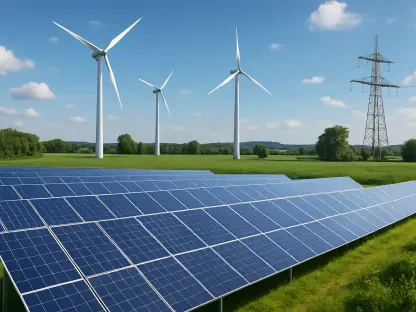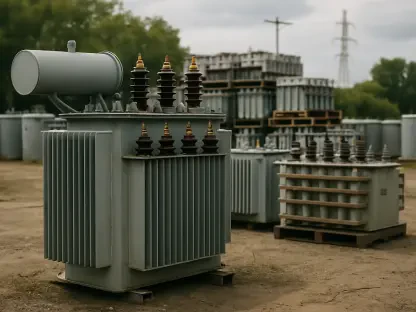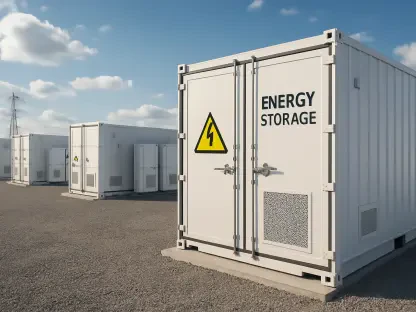Christopher Hailstone, renowned for his expertise in energy management, renewable energy, and electricity delivery, shares his insights into the U.S. Department of Energy’s recent identification of 16 federal locations for potential data center construction. This initiative is part of broader goals relating to AI technology and energy infrastructure.
Why has the U.S. Department of Energy (DOE) identified these 16 federal locations for potential data center construction?
The DOE’s identification of these sites is grounded in their strategic importance and readiness for development. These locations are equipped with essential infrastructure components such as land, power, water, and broadband capability, which are crucial for the creation of data centers. The need for establishing these centers is driven by the increasing demand for computational power, particularly with advancements in AI technology. By leveraging federal lands and existing resources, the DOE aims to expedite the development of these centers and support the burgeoning demand.
Can you provide more details on what data centers entail and why they are significant in today’s technology landscape?
Data centers are facilities that house computing equipment, storage systems, and telecommunication components. They form the backbone of the digital economy, facilitating data processing, storage, and communication. In today’s landscape, data centers are indispensable due to their role in supporting internet services, cloud computing, and now, AI development. Their significance stems from their ability to handle vast amounts of data, ensuring scalability, reliability, and security of digital services that billions rely on daily.
How do these new data centers tie into the DOE’s broader goals or initiatives?
The DOE’s broader initiatives focus on harnessing domestic energy resources and fostering technological innovation. These data centers align with goals to enhance computational capabilities and support AI development, which is increasingly seen as pivotal for national competitiveness in technology. Moreover, they fit into efforts to modernize energy infrastructure and integrate new energy solutions. By situating these centers on federal sites, DOE aims to streamline implementation while advancing its energy and technological objectives.
Why does Secretary of Energy Chris Wright say that the global race for AI dominance is the next Manhattan Project?
Secretary Wright’s comparison underscores the scale and significance of AI development, much like the WWII-era Manhattan Project that revolutionized physics and military strategy. AI has the potential to transform economies, defense mechanisms, and societal development globally. It’s an area of intense international competition where leading in this domain could secure economic and strategic advantages. This emphasis highlights the urgency and imperative nature of advancing AI technologies and infrastructure rapidly.
How does the development of AI technology influence the need for new data centers?
AI development is incredibly data-intensive, requiring vast computational power and storage solutions. The algorithms and processes involved in AI applications demand high-performance computing capabilities. As AI technologies grow and evolve, so does the need for specialized environments that can handle massive datasets and complex computations efficiently. Hence, the development of new data centers is crucial to support AI’s expanding hardware and software requirements.
What role do National Labs play in this AI and data center initiative?
National Labs are at the forefront of innovation and research in various fields, including AI and energy technologies. They play a pivotal role in developing, testing, and optimizing technologies that will be implemented in data centers. These labs also contribute to creating robust security protocols and efficient energy solutions, ensuring that the data centers perform optimally while advancing AI capabilities. Their involvement leverages their knowledge, expertise, and existing infrastructure to drive the initiative forward.
Data centers currently account for about 4.5% of U.S. electricity consumption and could reach 12% by 2028. How does the DOE plan to address this increasing energy demand?
The DOE is actively seeking input from stakeholders, including grid operators and industry experts, to address the rising energy demands of data centers. By exploring various energy sourcing methods, including co-locating with new generation facilities, the DOE aims to ensure a stable and sustainable energy supply. This may include integrating advanced technologies for energy efficiency and exploring renewable energy options, though not explicitly specified in the initial plan, to mitigate the environmental impact.
What types of energy resources are being considered for co-locating with these data centers?
The potential energy resources range from traditional power plants to innovative solutions, such as renewable energy sources like wind, solar, and hydroelectric power. The choice of resources varies by site and regional capabilities. The DOE is also looking into surplus interconnection capacity, which can optimize energy logistics and minimize waste. This diverse consideration aims to improve reliability and operational efficiency while potentially reducing costs and environmental impact.
The RFI does not specify that clean energy will be used. Is there a reason for this, and are there any plans to integrate renewable energy?
While the RFI does not mandate clean energy usage, the DOE remains committed to exploring sustainable options. The omission likely stems from the need to gather comprehensive input before finalizing strategies. Clean energy integration is a critical part of their broader goals, aligning with the increased emphasis on decarbonizing energy supplies. Plans to incorporate renewables will depend on stakeholder feedback, feasibility studies, and regional resource availability.
Who are the key stakeholders that the DOE is seeking input from, and why?
Key stakeholders include grid operators, energy producers, technology companies, and regional authorities. Engaging these groups ensures that the DOE gathers diverse perspectives and technical expertise, facilitating informed decision-making. Grid operators, in particular, hold vital information on existing infrastructure capabilities and challenges, which can influence the practical aspects of energy distribution and reliability for powering data centers.
What specific information is the DOE looking to gather from these stakeholders?
The DOE seeks insights into power needs, potential timelines, technological solutions, and economic considerations for developing data centers. They are also looking to understand approaches to co-locating new energy sources and interconnection capacities that might optimize operations. This information will help the DOE to design and implement data centers that are efficient, cost-effective, and capable of meeting the growing demands of AI technology.
How will input from grid operators influence the development of these data centers?
Grid operators provide critical data on current infrastructure, load capacities, and potential points of interconnection. Their input helps the DOE identify feasible sites and design strategies that ensure reliable power supply. Understanding challenges and opportunities from a grid perspective allows for optimized integration of new energy sources, enhancing overall efficiency and minimizing disruptions during construction and operation.
What is the timeline for beginning construction, and when does the DOE expect the data centers to be operational?
The DOE aims to begin construction by the end of this year, with a target for operational commencement by the end of 2027. This timeline reflects the urgency attributed to advancing AI capabilities and meeting increasing computational demands. The swift initiation and development process are intended to position the U.S. at the forefront of AI technology through enhanced infrastructure readiness.
Are there any milestones or checkpoints that the DOE has set for completing these projects?
Milestones include the completion of initial site assessments, securing necessary permits, installation of primary infrastructure components, and phased commissioning of data center operations. Regular checkpoints will likely be established to monitor progress, address any arising challenges, and ensure alignment with strategic goals. These checkpoints ensure the project stays on track and meets defined objectives within the stipulated timelines.
Can you give us more details about the sites identified, such as the National Renewable Energy Laboratory’s Flatiron Campus and Argonne National Laboratory?
The Flatiron Campus, for example, is equipped with sufficient land, power, water, and broadband capacity to host a 100 MW data center, ready for initiation as soon as this year. Argonne National Laboratory could accommodate a 1000 MW AI data park, with operational targets set for 2028. These sites are chosen for their readiness and ability to sustain large-scale, high-performance computational infrastructure, making them ideal for pioneering AI data centers.
What unique advantages or resources do these sites offer for the development of data centers?
These locations provide robust infrastructure, expansive land availability, and existing connectivity, which are critical for the efficient operation of data centers. They also benefit from proximity to technological expertise and innovations from National Labs, facilitating the integration of cutting-edge research and development into practical applications. These advantages accelerate project timelines and enhance the overall capacity to support AI advancements.
Are there any challenges or obstacles associated with these locations that the DOE is addressing?
Challenges include ensuring reliable power supply, managing environmental impacts, and navigating regulatory requirements. Additionally, constructing such large facilities necessitates addressing logistical concerns such as transportation and workforce availability. The DOE is working on detailed plans and collaborations with local authorities and stakeholders to mitigate these issues, ensuring smooth implementation and operational efficiency.
What is your forecast for the development of AI and data centers in the next decade?
The development of AI and data centers will likely see exponential growth, driven by increasing demand for computational power and data processing capabilities. We could expect significant advancements in energy efficiency and integration of renewable resources into these infrastructures. As AI technology matures, it will necessitate the establishment of more specialized and strategically located data centers, solidifying the U.S.’s position in global technology leadership.









